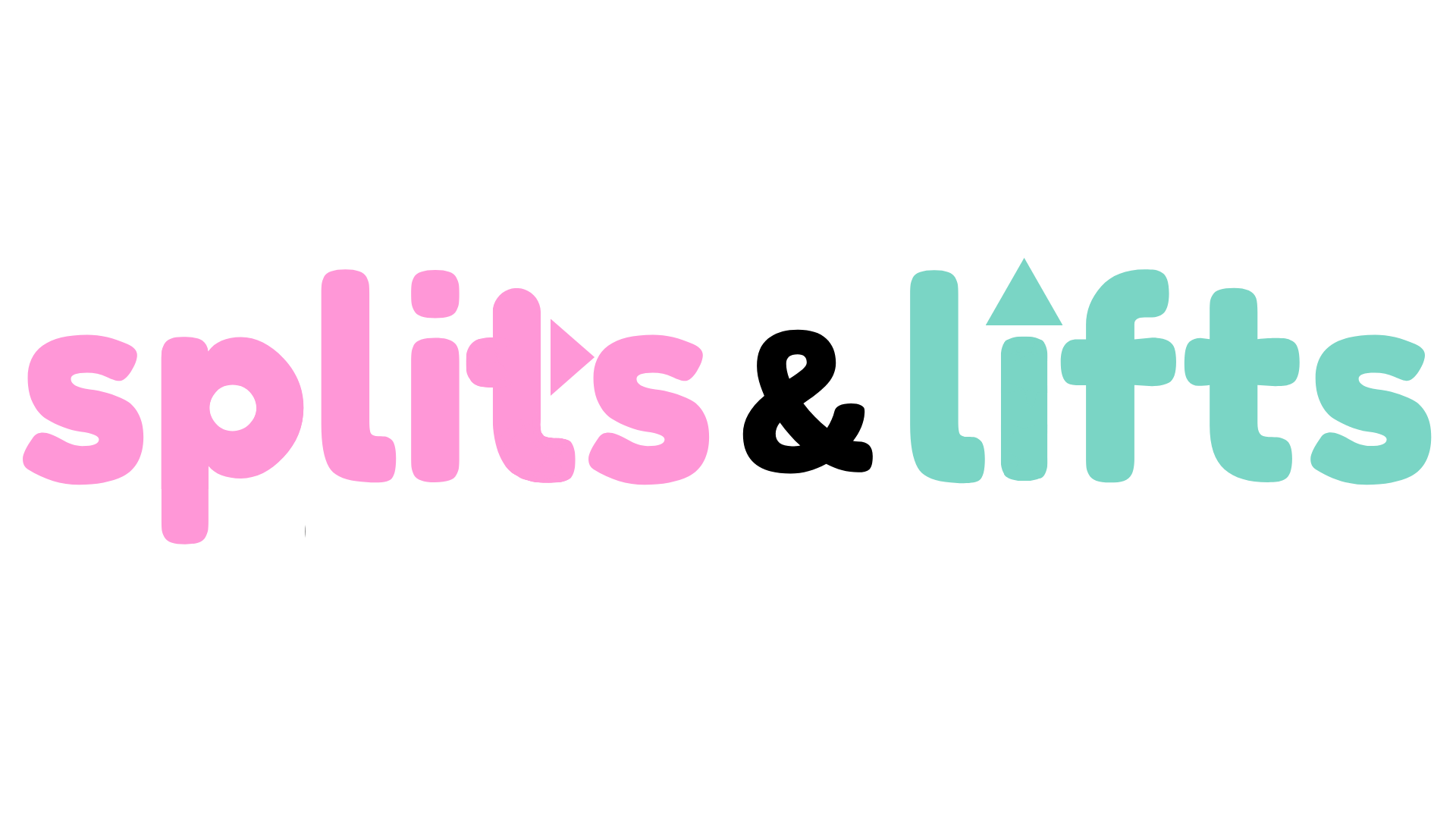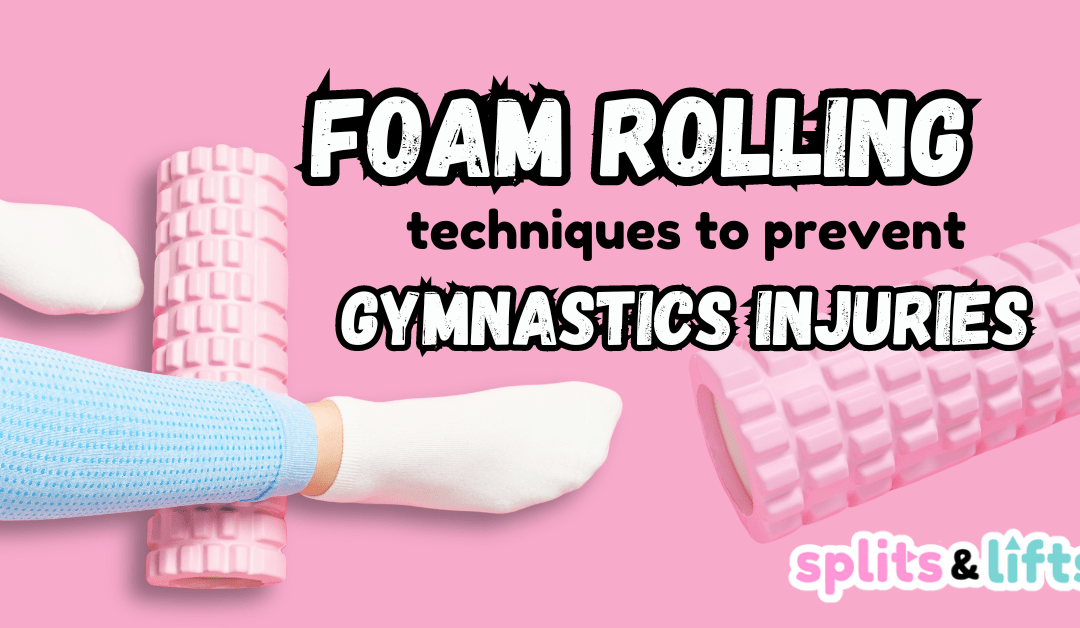Let’s ease into the New year, let me tell you about a resolution I wish MY coaches had picked up while I was a young gymnast:
MORE. FOAM. ROLLING.
I didn’t even touch a foam roller until I was in college, and let me tell you, it was an… experience.
The heavens opened, the angels sang, and 10 years of gymnastics-induced KNOTS started to untangle in my body. It was a beautifully painful experience.
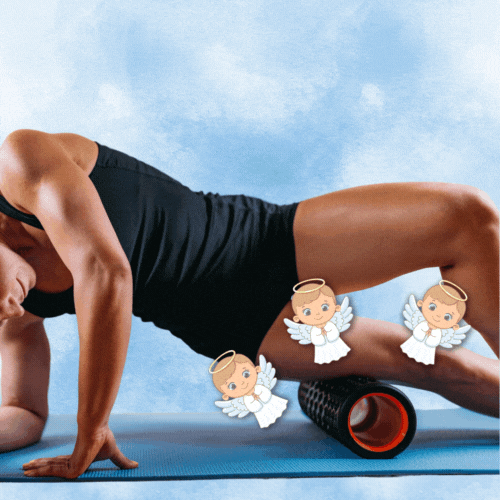
Now, I know my coaches weren’t intentionally keeping this tool from me. Even now, there’s not a whole lot of how-to on foam rolling effectively. So let’s break it down.
Explaining foam rolling to your gymnasts.
You hand Carly Cartwheel a big foam cylinder and tell her to get rolling, but this can seem a little silly if she doesn’t know how to foam roll.
What is the point of rocking around on this military-grade pool noodle?
She throws a leg over the foam roller, half-heartedly rolling it around for about twenty seconds before calling it quits.
If we don’t teach our gymnasts how to effectively use them, it’s unlikely they’re getting the full benefits out of their foam rollers.
In order to fully understand foam rolling, let’s first break down what it is, how it works, and what it’s used for.
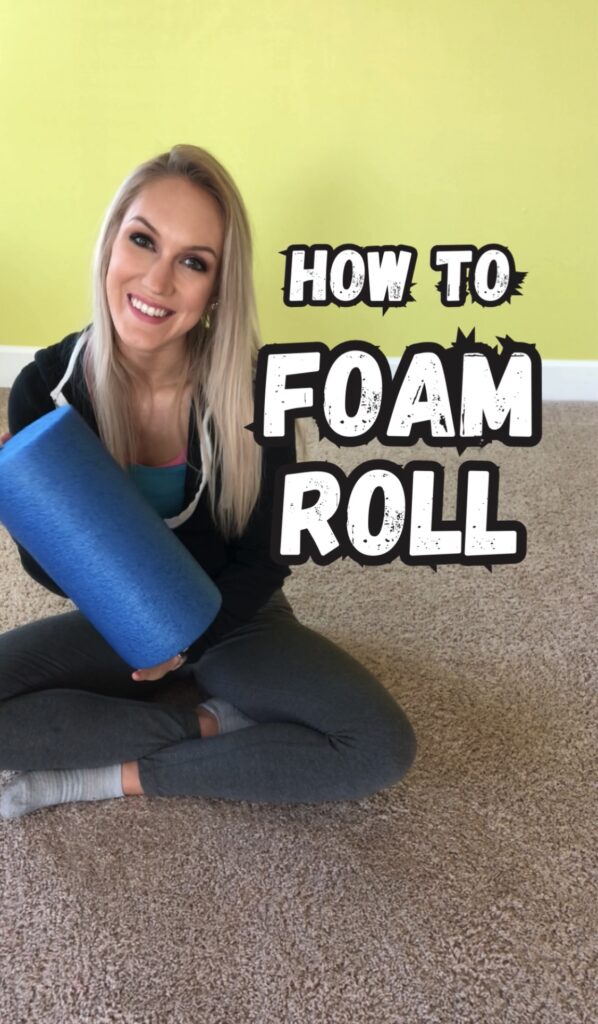
What is foam rolling?
Foam rolling involves using a firm device to put pressure on our muscles. It is also a form of self-myofascial release (SMR).
Okay, that’s a big term, but it’s not as difficult as it sounds!
Our muscle fascia is the connective tissue that works to hold our muscles in place.
However, when we overuse or misuse our bodies, this tissue can become temporarily damaged. This can cause inflammation and eventual altered movement patterns.
Try using an experience every gymnast knows:
“Think about when you’re super sore after practice, and suddenly you’re climbing the stairs like you’ve just learned how to walk.”
There is extra tension, and it can come from lots of things: poor posture, repetitive motions, or dysfunctional movement.
Foam rolling adds pressure to encourage this tension to release and temporarily increase movement capability. It’s more a mind-to-body release than anything!
Why foam?
Well, it’s just a little more comfortable than something tougher! But, if you’re in a pinch, you can always use something like a water bottle or a lacrosse ball.
For gyms with tighter budgets, I also recommend buying long foam rollers and cutting them up into smaller ones. You can usually get 3 little rollers out of one!
How to foam roll for soreness.
There are a couple reasons your gymnasts might foam roll. Lasting soreness after a hard workout is one we’ve all felt. Here’s how:
- Target the sensitive muscle.
- Roll the foam roller along the length of the muscle.
- Find a trigger point or knot in the muscle.
- Press down into the foam roller and hold for at least 30 seconds. Don’t just roll aimlessly.
- Relax! It’s going to be a little painful, but half a minute of pain is better than 2 days of it!
How to foam roll for recovery.
Even if your gymnasts aren’t ACHING with soreness, odds are their muscles are still holding extra tension.
Being proactive and consistent can reduce downtime––SO important as a competitive gymnast.
Take our hero, Simone Biles, for example. She’s the most decorated American gymnast and an Olympic champion. She needs to be in the gym and training to compete at the best of her ability.
One of her main methods of recovery is… you guessed it, foam rolling.
So how can you foam roll for recovery?
- Be consistent. Try to foam roll after each practice.
- Be thorough. Don’t just find one knot and call it quits. Get ‘em all!
- Be patient. 30 seconds is how long it takes for our muscles to relax.
- Be realistic. Remember, the relief is only temporary.
To overcome this “temporary” hurdle, you have to link foam rolling with follow through.
Foam rolling is just a tool to help reduce muscle imbalance, not a cure.
Link it with activation exercises for underactive muscles, and you’ll start to see more lasting change.
How to foam roll to prevent injury.
Oh look! My favorite thing! Injury prevention ✨
Injury prevention through movement requires us to take a look at movement compensations. This is what I do when I do my virtual movement assessments.
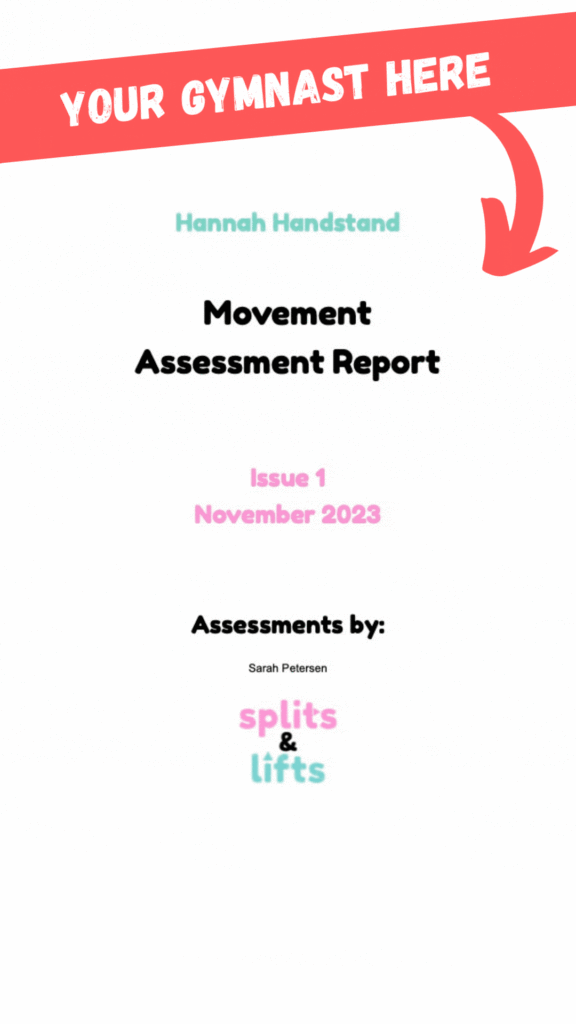
It may seem like gymnasts have perfect mobility by the nature of the sport, but this is rarely the case.
Here’s how I catch the weak points: In my assessments, I give the gymnasts basic exercises and watch how their bodies perform them.
Tight muscles won’t always let them take the safest route to complete the motion.
This can mean their knees collapse in, their spines hunch downward, or they put extra strain on some joints, and this all leads to injury.
So how can gymnasts foam roll to prevent injury?
- Find where they’re struggling. A good start is to get a virtual movement assessment done to highlight exactly what to foam roll and how.
- In the meantime, here are some examples to get started:
- Knees caving in –– Roll out the inner thigh
- Landing with chest too far forward –– Roll out calf muscles
- Heels coming off the ground –– Also roll out calf muscles
- Having trouble lifting arms overhead –– Roll out lats
I hope you incorporate a little foam rolling in your practices this year!
